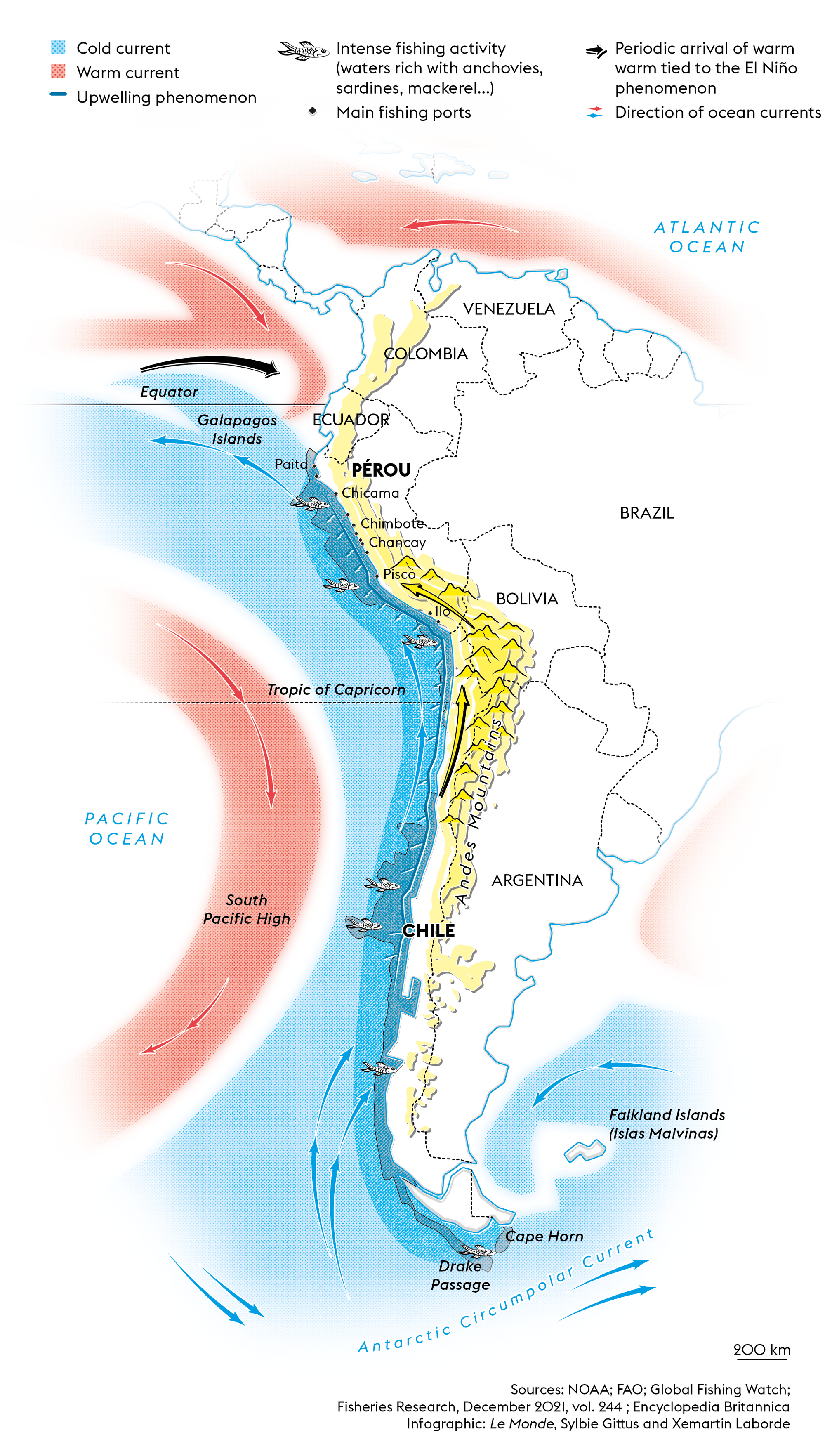


The Humboldt Current, a fish-rich system under threat
Investigation'The Earth's Pulses' (2/6). The strip of cold water along the west coast of South America is teeming with fish. But the resource could be endangered by global warming.
It's neither the most powerful nor the largest of ocean currents. Even less so, one of the fundamental pulses that give rhythm to the life of our planet, like the famous Gulf Stream. "Frankly, the impact of the Humboldt Current on global climate is not very significant," said the oceanographers and climatologists François Colas and Vincent Echevin, "If it were to disappear – which is unlikely – the major physical balances would not be disrupted." In other words, you might ask what this strip of cold water 50 to 200 kilometers wide along the west coast of South America has to do with a series of articles devoted to the planet's great beats. But the two researchers from the Research Institute for Development (IRD) added: "However, its ecological, biological and economic impact is major, essential for South America, but, more broadly, for the world."
We've been warned. The Humboldt Current is a system based on paradoxes and exceptions. Its origin, operation, consequences and even its name make it a unique phenomenon. It seems simple: A powerful flow of cold water from Antarctica flowing along 5,000 kilometers of Pacific coastline, boosting the oceanic food chain to the point of hosting the world's most productive industrial fishery since the mid-20th century, from Chile to Peru.
This overview of the phenomenon can still be found today in many books aimed at the general public. Yet it is both incomplete in terms of its consequences and inaccurate in terms of its causes. Humans did not wait until the 1950s and the second agricultural revolution to understand what they could gain from the region's exceptional natural resources. From their arrival on the continent at least 14,000 years ago, to the guano collectors of the 19th century, to the first real cities built over 5,000 years ago, and even to the Incas, who settled in the mountains some 200 kilometers from the coast, the history of the presence of Homo sapiens in this part of the New World has in fact been shaped by the ocean, as we'll come back to later.
'Weak' circulation
But first, let's correct the main error in our brief definition: a powerful cold current coming from Antarctica. Well, not quite! First of all, the circulation observed along the coast is "weak," said Colas: a few centimeters per second, whereas the Gulf Stream pushes water at more than a meter per second. What's more, the cold water doesn't come from the south, but from the depths. In their laboratory on the Jussieu campus in Paris, Colas and Echevin sketched out the sequence of phenomena. First, there's the wind, which rotates counter-clockwise around the huge anticyclone in the middle of the South Pacific. On this side of the ocean, it blows from south to north, and is expected to push the water along the coast. But it's not alone. The Coriolis force, created by the Earth's rotation, also plays a role. The combined effect pushes surface water not northward, but outward, to the west. And as sea levels need to be balanced, water rises from the depths. It's a slow movement – very slow, in fact, at around one meter a day – but it's relentless.
You have 84.85% of this article left to read. The rest is for subscribers only.


